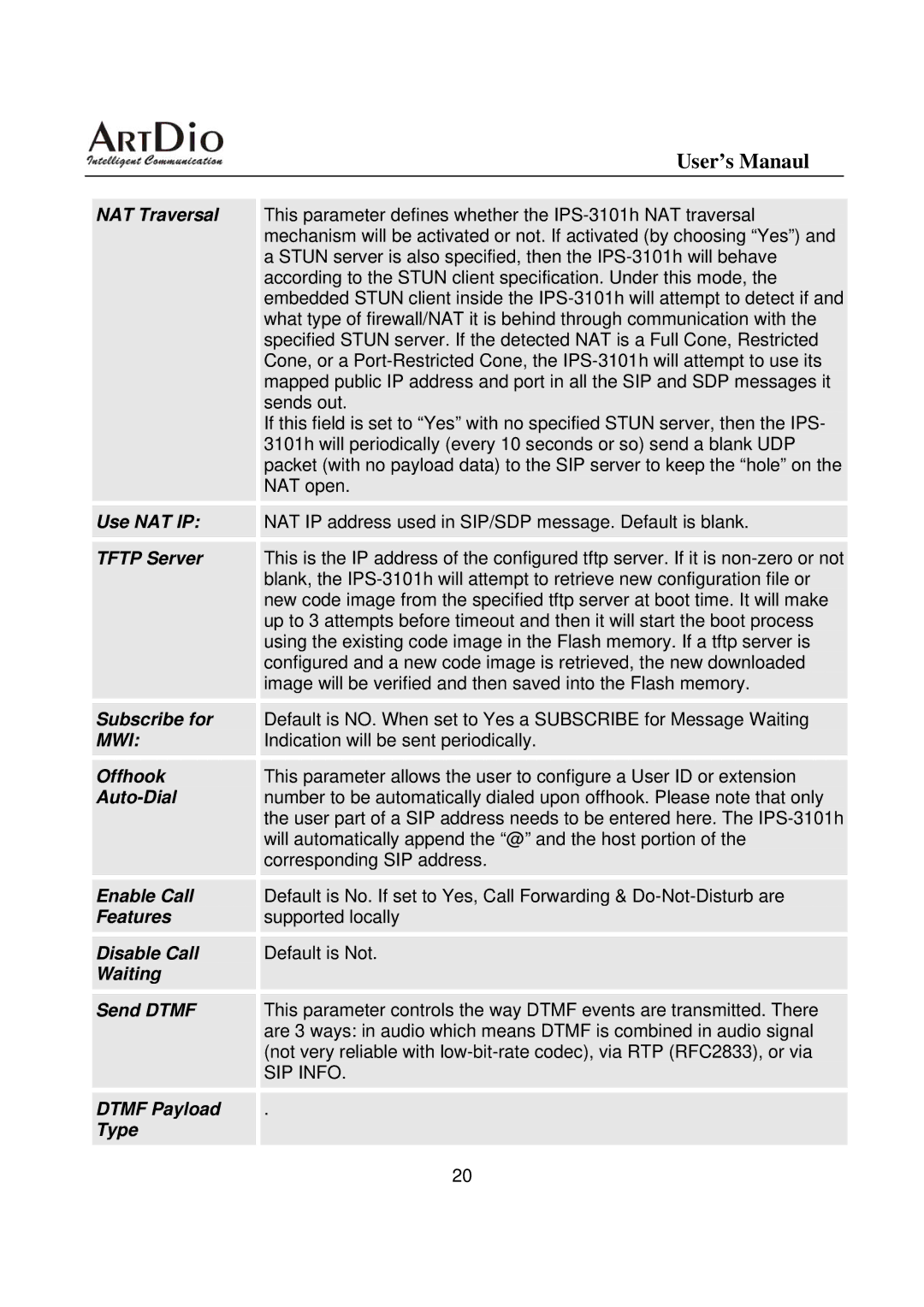
User’s Manaul
NAT Traversal
Use NAT IP:
TFTP Server
Subscribe for MWI:
Offhook
Enable Call Features
Disable Call Waiting
Send DTMF
DTMF Payload Type
This parameter defines whether the
If this field is set to “Yes” with no specified STUN server, then the IPS- 3101h will periodically (every 10 seconds or so) send a blank UDP packet (with no payload data) to the SIP server to keep the “hole” on the NAT open.
NAT IP address used in SIP/SDP message. Default is blank.
This is the IP address of the configured tftp server. If it is
Default is NO. When set to Yes a SUBSCRIBE for Message Waiting Indication will be sent periodically.
This parameter allows the user to configure a User ID or extension number to be automatically dialed upon offhook. Please note that only the user part of a SIP address needs to be entered here. The
Default is No. If set to Yes, Call Forwarding &
Default is Not.
This parameter controls the way DTMF events are transmitted. There are 3 ways: in audio which means DTMF is combined in audio signal (not very reliable with
SIP INFO.
.
20
